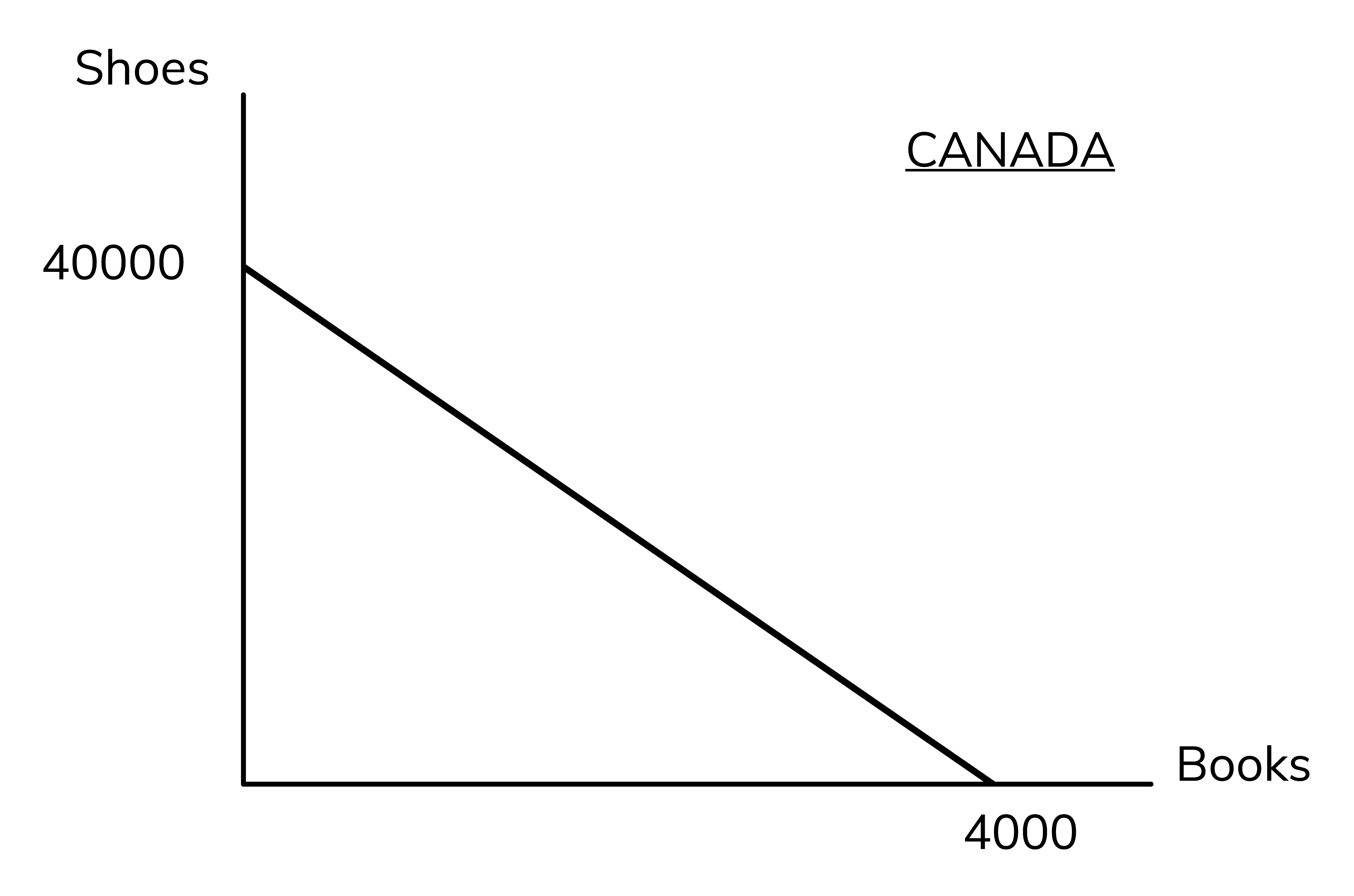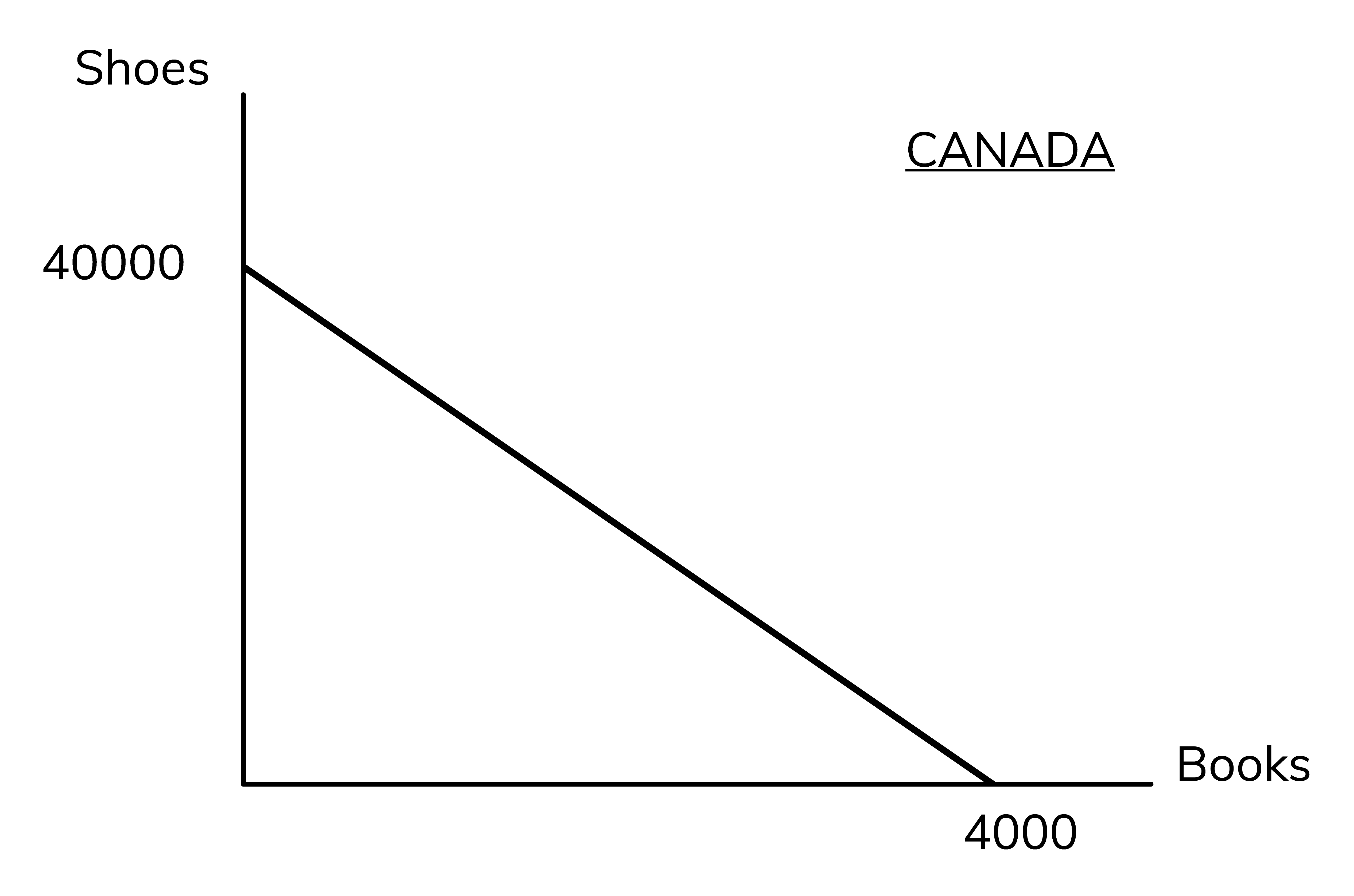3. Absolute and Comparative Advantage
1/16
There's no tags or description
Looks like no tags are added yet.
Name | Mastery | Learn | Test | Matching | Spaced |
|---|
No study sessions yet.
17 Terms
Absolute Advantage
the ability to produce a good using fewer inputs (less time, workers, money) than another producer. It can also be seen as the ability to make more goods in the same amount of time.
Production possibility curve (PPC)
a line that shows the different combinations of two products that can be produced
Consumption Possibility Curve (CPC)
the same as the PPC but it shows the combinations of two products that can be consumed with trade.
Opportunity Cost
The opportunity cost is how much of one good must be given up to make one more unit of another good.
40000/4000 = 10 shoes
the opportunity cost of making one book for Canada is

4000/40000 = 0.1 books
The opportunity cost of making one shoe for Canada is

Comparative Advantage
this is when you have a lower opportunity cost of producing a product.
10
CANADA MEXICO
SHOES 40,000 90,000
BOOKS 4,000 6,000
The opportunity cost of making 1 book for Canada is ___ shoes
15
CANADA MEXICO
SHOES 40,000 90,000
BOOKS 4,000 6,000
The opportunity cost of making 1 book for Mexico is ___ shoes
books, shoes
Canada has a comparative advantage in ____ and Mexico has a comparative advantage in ____
10, 15
Each book will trade between:
Lower limit: ___ shoes
Upper limit: ___ shoes
4000 books
Before the trade Canada was consuming 2,950 books and 10,500 shoes, while Mexico was consuming 800 books and 78,000 shoes. Suppose each country specializes and they trade 1000 Books for 11000 Shoes - this is called the terms of trade.
Ask yourself, what product will they spend all their time making?
1000 books
Before the trade Canada was consuming 2,950 books and 10,500 shoes, while Mexico was consuming 800 books and 78,000 shoes. Suppose each country specializes and they trade 1000 Books for 11000 Shoes - this is called the terms of trade.
How much will they give up with the trade?
3000 books
Before the trade Canada was consuming 2,950 books and 10,500 shoes, while Mexico was consuming 800 books and 78,000 shoes. Suppose each country specializes and they trade 1000 Books for 11000 Shoes - this is called the terms of trade.
What are they left with?
11000 shoes
Before the trade Canada was consuming 2,950 books and 10,500 shoes, while Mexico was consuming 800 books and 78,000 shoes. Suppose each country specializes and they trade 1000 Books for 11000 Shoes - this is called the terms of trade.
What do they get in return?
3000 Books and 11000 Shoes
Before the trade Canada was consuming 2,950 books and 10,500 shoes, while Mexico was consuming 800 books and 78,000 shoes. Suppose each country specializes and they trade 1000 Books for 11000 Shoes - this is called the terms of trade.
What is their post-trade (after trade) consumption?
500 shoes and 50 books
What is Canada's gain from the trade?